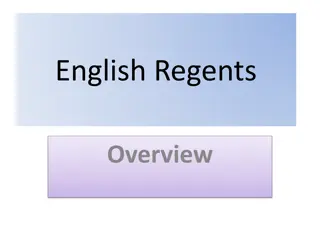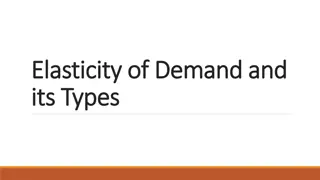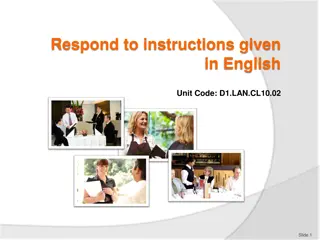
Approaches to Teaching English Language: Structural, Situational, Communicative, Constructive
Explore the different approaches to teaching English language, including the structural, situational, communicative, and constructive approaches. Understand the principles, merits, and objectives of each approach to enhance language learning.
Download Presentation

Please find below an Image/Link to download the presentation.
The content on the website is provided AS IS for your information and personal use only. It may not be sold, licensed, or shared on other websites without obtaining consent from the author. If you encounter any issues during the download, it is possible that the publisher has removed the file from their server.
You are allowed to download the files provided on this website for personal or commercial use, subject to the condition that they are used lawfully. All files are the property of their respective owners.
The content on the website is provided AS IS for your information and personal use only. It may not be sold, licensed, or shared on other websites without obtaining consent from the author.
E N D
Presentation Transcript
PEDAGOGY OF ENGLISH 2 PART 2 PEDAGOGY OF ENGLISH 2 PART 2 Presents Presents
UNIT 3 APPROACHES TO TEACHING APPROACHES TO TEACHING ENGLISH LANGUAGE ENGLISH LANGUAGE
INTRODUCTION In the previous unit, we studied about some methods that are used in teaching of English. These methods have been tried out earlier with varying degree of success. The common aspect of these is that certain important features of the methods have been totally absorbed in the pedagogy. In this unit we will be discussing about some approaches used in teaching of English such as structural approach, situational approach, communicative approach and constructive approach.
OBJECTIVES After going through this unit you will be able to define different approaches of teaching. explain merits and demerits of different approaches. use different approaches contextually
STRUCTURAL APPROACH It is also known as Aural-oral Approach. Each language has its own pattern of structure. "Structural approach is a scientific study of the fundamental structures of the English language, their analysis and logical arrangement". The structural approach is an outcome of the experiments. Meaningful words are used in particular order. Every structure embodies an important grammatical point. A sentence needs a grammatical background. The different arrangements or patterns of words are called structures.
Principles of Structural Approach It is based on three main principles: Importance is given to student's activity rather than the activity of the teacher. Importance is given to speech work. Importance is given in developing correct language habits among the students, particularly the habits of arranging words in English in order to replace the sentence patterns of the pupil's mother tongue.
Merits of the Structural Approach It can be adopted for all stages of education. It stress habit formation, through intensive drills, the students cultivate the habit of speaking the English language, due to much oral drilling, whatever is learnt in the class remains stable in the minds of the students. It provides enough opportunities to the students to express their ideas and feelings and makes both teacher and students active which is psychologically sound. It puts more emphasis on speech or oral aspects of learning. The students are provided with carefully selected and graded language material. Making use of this approach the teacher can attend to more or almost all students of his class.
Demerits of the Structural Approach It is suitable only in lower classes. Only well selected sentence patterns are taught through this approach. It is rarely successful in overcrowded classroom. It neglects reading of all types. This approach needs specially planned text-books and well trained teachers to create appropriate environment for learning the language. The teacher should care that the students get adequate practice in the use of special words. New words should be introduced gradually and they must be corrected with the structures already taught. This approach is based on the assumption that language learning is a matter of habit formation, which involves a lot of repetition and conscious drilling of the language items.
SITUATIONAL APPROACH The situational approach indicates as to how a teacher should create a real situation in the classroom. The learner is expected to apply the language learnt in the classroom to situation outside the classroom. According to this approach the English as a second language should be taught by forming links between the new words and the real situations encountered by the child while learning their mother tongue. The language items thus selected and graded are presented and practised in meaningful situations. New words are introduced incidentally in the class. Opportunities are provided to the pupils to associate the meaning of new words with the created situation.
Merits of the Situational Approach It creates interest among the students. Emphasis is given on learning by play. Action chains make the classroom atmosphere lively. Lot of material aid is used to make the learning stable and interesting. Lot of examples can be given The teacher can make his illustrations clear by using various materials or by pictures etc. Stress is given on learning through hearing.
Demerits of the Situational Approach It is suitable only in the lower classes as this approach cannot be made applicable to the senior classes. Text books cannot be taught by this method. Only well selected sentence patterns can be taught by this approach. That minimum makes the classroom dull. Trained teachers are required for it. Prose, poetry, rapid reader etc. cannot be taught through this approach. Sometimes it becomes difficult to relate the statement of the teacher with the created situation.
COMMUNICATIVE APPROACH The communicative approach is the recent and latest approach of teaching English. The socio linguists Dell Hymes propagated this approach. This approach lays a great emphasis on the use of language. It enables the students to communicate his ideas in a better way. According to Dell the purpose of teaching language is the communicative competence. The following materials are used in this approach; different functions such as requesting, informing, expressing likes and dislikes; notions of time, location and duration etc.; using language to perform different tasks such as solving puzzles, dramatization, role play etc. Teachers have known that their aim is to get students communicating successfully outside the classroom. Communicative competence not only applies the grammatical rules of a language in order to form a grammatically correct sentence, but also to know when and where to use these sentences- in other words, to use them appropriately.
Merits of Communicative Approach The merit of communicative approach is to develop the speech ability among the students. It teaches of different ways of expression. This approach is based on the practical utility. It lays more stress on the functional value of language. It enables the students to communicative their ideas both inside and outside the class-room.
Demerits of Communicative Approach This approach ignores grammar and structures. It is not properly and scientifically developed as yet. It is a new approach and it is to be used and tested in our schools for language teaching. Practical utility of this approach is yet to be confirmed. Trained teachers are not available in this approach to teach English language. Students don't get proper environment for communication.
CONSTRUCTIVE APPROACH This view represents the shift from education based on behaviourism, to education based on cognitive theory. Thus, behaviourist epistemology essence is based on intelligence, domains of objectives, levels of knowledge and reinforcement; however in the case of constructivist epistemology it is the learner who constructs their knowledge on the basis of interaction with the environment. According to this approach, acquiring second language will be effective in authentic and complex learning environment or situation. According to Reinfried constructivist language learning should be action oriented where language is learned through collaboration, free creation is praised, and learning is achieved by actively doing projects and self- teaching. Constructivist language learning is to be holistic with content oriented perspective, authentic and complex learning environment.
Principles of Constructive Approach Process oriented Awareness Content Awareness Intercultural Awareness Creativity Collaborative Learning Language Awareness Individual Learning Cultural Awareness Learner Oriented Learners Autonomy
Merits of Constructive Approach This method of teaching is effective for students who learn better in a hands-on environment and helps students to better relate the information learned in the classroom to their lives. Children learn more, and enjoy learning more when they are actively involved, rather than passive listeners. Education works best when it concentrates on thinking and understanding, rather than on rote memorization. Constructivism concentrates on learning how to think and understand. Constructivist learning is transferable. In constructivist classrooms, students create organizing principles Constructivism gives students ownership of what they learn, since learning is based on students' questions and explorations, and often the students have a hand in designing the assessments as well. Constructivism promotes social and communication skills by creating a classroom environment that emphasizes collaboration and exchange of ideas.
Demerits of Constructive Approach The training necessary, for constructive teaching is extensive and often requires costly long-term professional development. With an average number of students in one classroom, teachers are unable to customize the curriculum to each student, as their prior knowledge will vary. The constructivism curriculum also eliminates standardized testing and grades. It requires more time and energy.
S-O-S APPROACH (Structural Oral Situational Approach) THE STRUCTURAL APPROACH Usefulness - Only useful items are listed. Frequency -The structures must be selected with a high frequency of occurrence. Teach ability - Items easy from teaching point of view (The present continuous tense is introduced earlier than the simple present). Productivity - The structures that can give rise to more sentences are listed at the top, when compared to those which have no scope.
ORAL APPROACH It is a flexible method. The emphasis is on the spoken method. Some people can use a language for oral communication only. They are illiterate, but they can understand their language and also respond suitably. Learning to speak a language is by far the shortest road to learning to read it and write it. The teacher will try to make use of their own oral skills and of the students: To introduce language items (structural and vocabulary items) To discuss the reading passages and poems To teach composition writing To prepare the students orally for doing the written exercises.
Advantages Of Teaching English Through Oral Method Natural way of learning any language It is a good introduction to the other more difficult skills mainly, reading and writing. It is the only way by which we can ensure economical use of class time.
SITUATIONAL APPROACH According to this approach the English as a second language should be taught by forming links between the new words and the real situations encountered by the child while learning their mother tongue. All the items are learnt by a child in real situations. The situation in which the child learns his mother- tongue are repeated again and again and whatever the child understands or expresses about his experiences of his own life are then in same way connected with the terminology of the English Language.
Advantages Of Situational Approach It creates interest among the students. Emphasis is given on learning by play. Action chains make the classroom atmosphere lively. Lot of material aid is used to make the learning stable. The teacher can make his illustrations clear by using various materials or by pictures etc.
Disadvantages It is suitable only in the lower classes as this approach cannot be made applicable to the senior classes. Trained teachers are required for it. Prose, poetry, rapid reader etc. cannot be taught through this approach.
ECLECTIC APPROACH Eclectic approach is a method of language education that combines various approaches and methodologies to teach language depending on the aims of the lesson and the abilities of the learners. Different teaching methods are borrowed and adapted to suit the requirement of the learners. It breaks the monotony of the class. In addition, It is a conceptual approach that does not merely include one paradigm or a set of assumptions. Instead, eclecticism adheres to or is constituted from several theories, styles, and ideas in order to gain a thorough insight about the subject, and draws upon different theories in different cases. Eclecticism is common in many fields of study such as psychology, martial arts, philosophy of teaching, religion and drama.
Principles of Eclectic Approach Giving teachers a chance to choose different kinds of teaching techniques in each class period to reach the aims of the lesson. Flexibility in choosing any aspect or method that teachers think suitable for teaching inside the classroom. Giving a chance to pupils to see different kinds of teaching techniques that break monotony and dullness on one hand and ensure better understanding for the material on the other hand. Advocacy of the Eclectic Approach to ESL/EFL Teaching in Bangladesh. Solving difficulties concerning presenting the language material in the pupils textbook. Using different kinds of teaching aids which leads to better understanding. Saving a lot of time and efforts in presenting language activities.
Advantages of using Eclectic approach The teacher has more flexibility. No aspect of language skill is ignored. There is variety in the classroom. Classroom atmosphere is dynamic. These types of programs not only negotiate teacher skill-development within an improved recognition of and respect for cross-cultural and multi-linguistic classroom settings, but also encourages student pride in their heritage, language, communication preferences and self- identity.





















